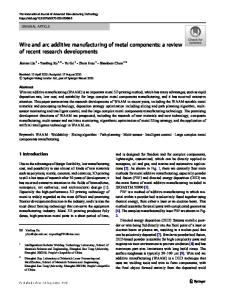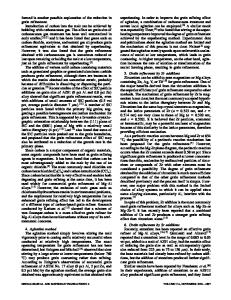Grain Refinement of Magnesium Alloys: A Review of Recent Research, Theoretical Developments, and Their Application
- PDF / 809,104 Bytes
- 15 Pages / 593.972 x 792 pts Page_size
- 2 Downloads / 246 Views
paper covers developments since our 2005 Metallurgical and Materials Transactions publication on the Grain Refinement of Magnesium Alloys.[1] The 2005 paper was in two parts: Firstly, a review of the literature on the grain refinement of magnesium alloys and then the application of our early theoretical work on the grain refinement of aluminum alloys to magnesium alloys. A key conclusion from that paper was that ‘‘research needs to focus on gaining a better understanding of the detailed mechanisms by which refinement occurs and gathering data to improve the ability to predict grain refinement for particular combinations of alloy and impurity chemistry and nucleant particles.’’ Although only a few years have elapsed since making D.H. STJOHN, Professor and Director, and J.A. TAYLOR, Principal Research Fellow, are with the CAST Cooperative Research Centre, The University of Queensland, St Lucia, QLD 4072, Australia and also with the Centre for Advanced Materials Processing and Manufacturing (AMPAM), School of Mechanical and Mining Engineering, The University of Queensland. Contact e-mail: d.stjohn@ uq.edu.au M.A. EASTON, Associate Professor and CEO, is with the CAST Cooperative Research Centre, The University of Queensland and also with the Materials Engineering, Monash University, Clayton, VIC 3069, Australia. M. QIAN, Associate Professor, is with the ARC Centre of Excellence for Design in Light Metals, The University of Queensland and also with the Centre for Advanced Materials Processing and Manufacturing (AMPAM), School of Mechanical and Mining Engineering, The University of Queensland. Manuscript submitted June 7, 2012. Article published online November 8, 2012 METALLURGICAL AND MATERIALS TRANSACTIONS A
this statement, an updated review paper is warranted. Since 2005, we have developed the Interdependence Theory[2] which provides new perspectives for the study of grain refinement. It is a more rigorous model for analyzing grain refinement mechanisms and predicting grain size outcomes. This paper discusses the new theory as it applies to magnesium alloys and reviews several other developments on the grain refinement of magnesium alloys since 2005. Nucleation of the primary phase is the first step in the transformation of molten alloys into the solid state. As this transformation sets the as-cast grain size of the microstructure, control of nucleation has been the subject of much research.[1] In the case of magnesium alloys, a finer grain size improves most mechanical properties including yield strength due to the high Hall–Petch coefficient,[3–6] creep resistance,[7] and corrosion resistance.[8–10] In particular, from a strengthening perspective, plastic deformation of hexagonal close-packed (hcp) magnesium begins by activation of the soft basal slip system, followed by prismatic and other hard slip systems as the internal stresses increase. Basal slip leads to the formation of dislocation pileups at grain boundaries and the second phase particles. The ensuing activation of prismatic slip results in linear strain hardening du
Data Loading...











